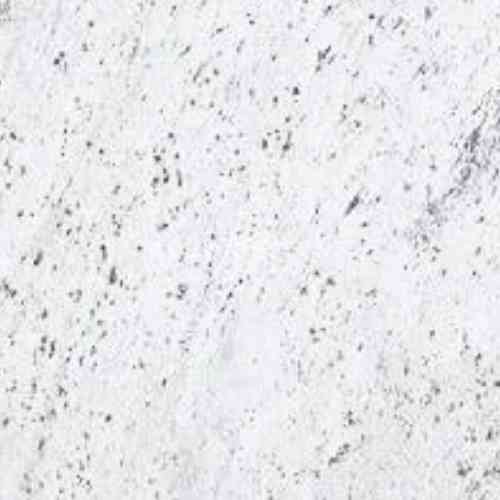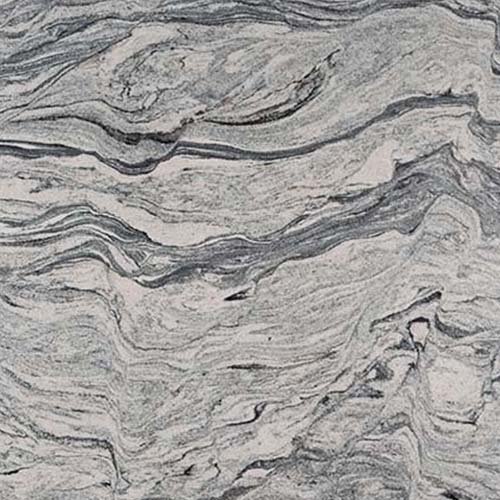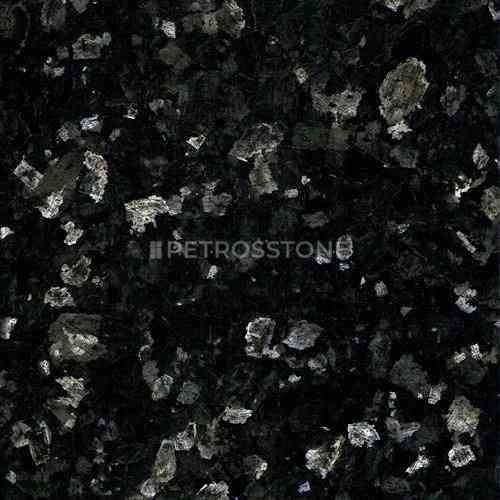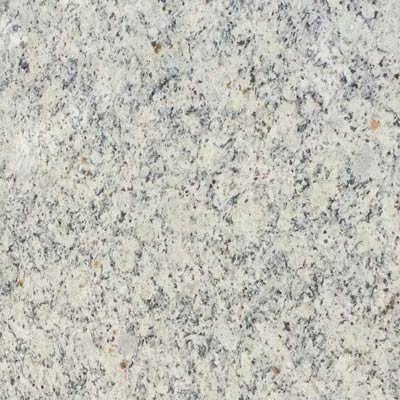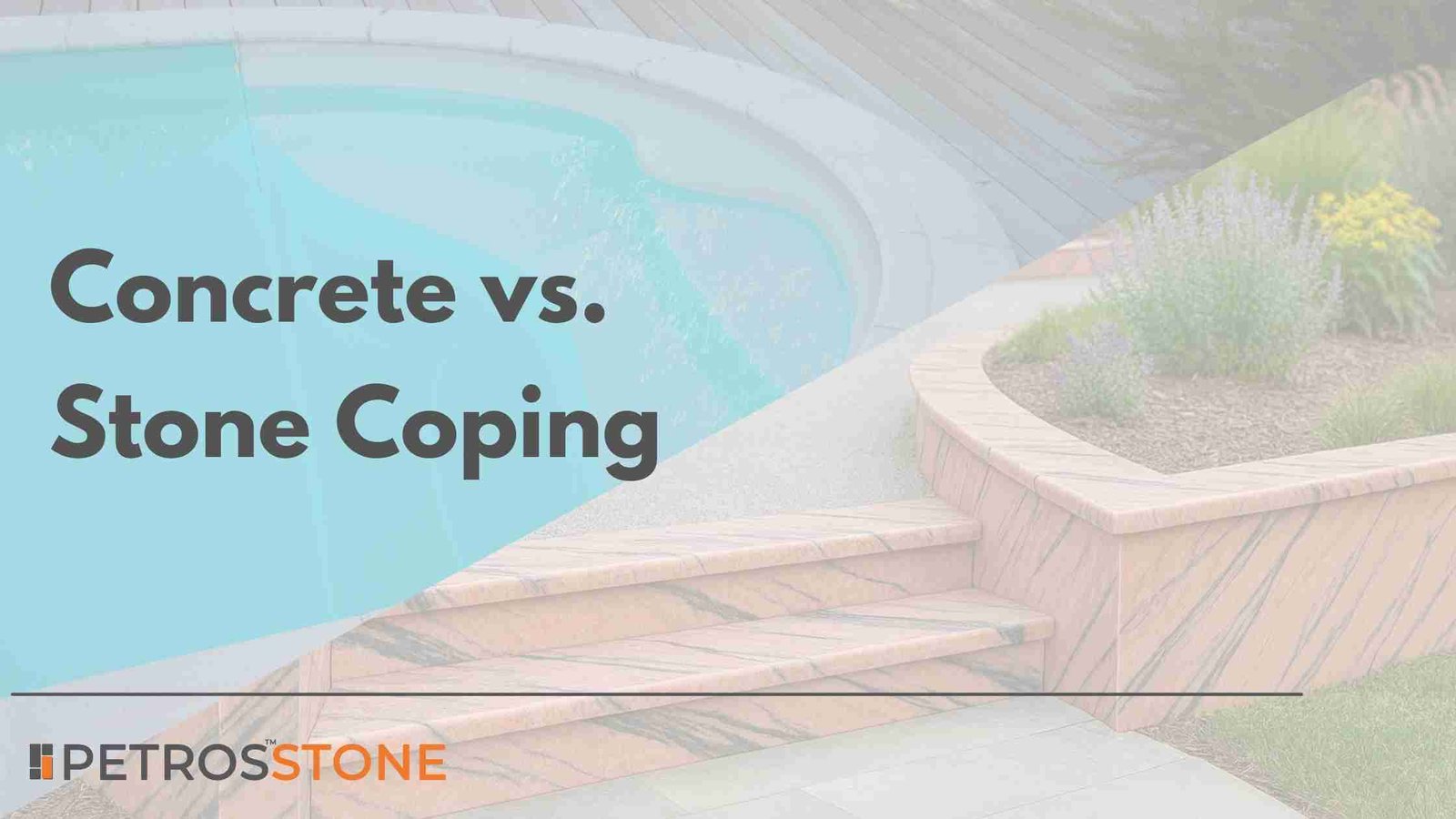
Natural and concrete stones tend to be the two major contenders for coping stones for pool or wall.
When it comes to Concerete vs. stone coping – both are excellent options; however, they differ when it comes to the design, budget, and requirements. It can be a tough decision to pick between them. Should I invest in a stone? Is it worth it?
Concrete is the smart, adaptable solution for modern projects, custom designs and anyone working within a budget. Because it can be shaped and colored to fit any vision it is a designer’s workhorse.
By contrast, stone is an investment in natural artistry and permanence. It is the right selection for projects where luxury, authenticity and long term value are the key drivers.
Lets see how they stack up against one another in this in-depth guidebook.
What Is Pool Coping or Wall Coping?
The material used to protect the top part of the structure is known as coping. It performs many vital functions:
It protects the wall or pool surface from water damage by directing rainwater away from the building. It provides the space with a polished appearance that’s elegant and clean.
It provides a nonslip edging such that individuals could walk on or hold onto it in the event of a swimming pool.
The most popular coping materials today are concrete and stone because of their exceptional weather resistance and durability. Although both styles provide adequate protection, they provide a clear choice between contemporary customizability and timeless elegance.
Concrete Coping
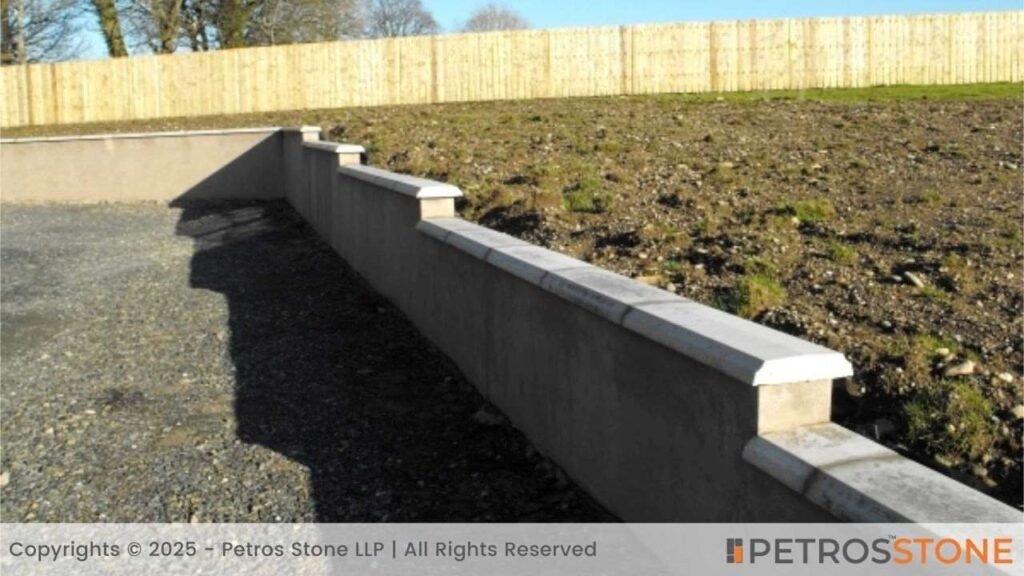
Concrete coping is usually a manufactured item made up of cement, aggregates, and drinking water. It may be cast to particular shapes and sizes in a manufacturing facility or even poured on the job site directly. Its versatility is the thing that causes it to be popular, since it is available in a multitude of textures, colors, and shapes, which can be tailored to almost any design.
Prevalent Uses consist of modern swimming pools, gardens and retaining walls, big public areas, and projects in which budget and custom shapes are crucial.
Stone Coping
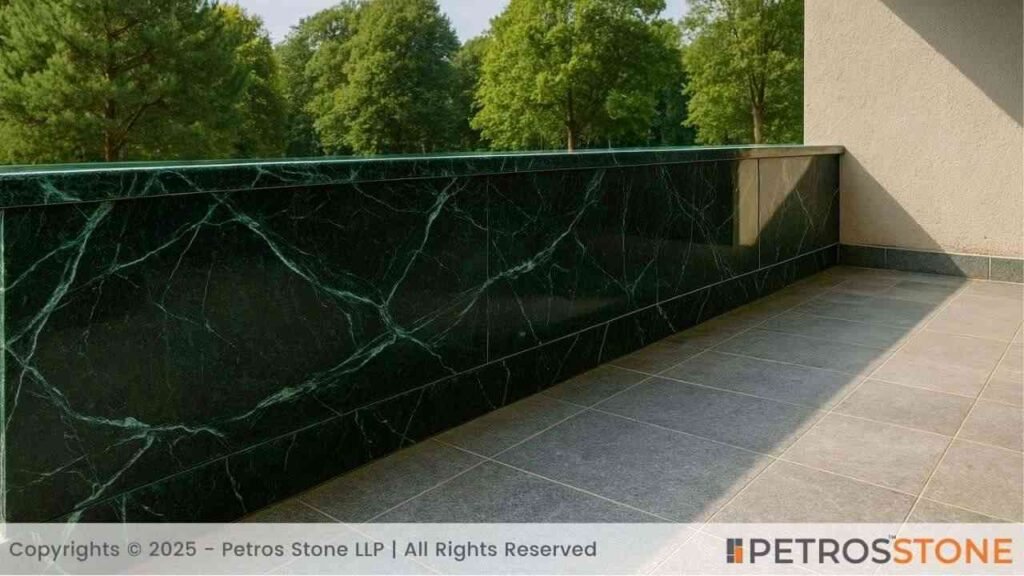
The coping is created from natural stones that are found on earth, including limestone, granite, travertine, and sandstone. Each piece is cut as well as finished, giving the cap its distinct appearance. Its genuine, unique patterns, associated with luxury and permanence, are what make it so popular.
Prevalent Uses consist of high-end residential pools, historical restorations, stately garden walls, and any project in which natural beauty as well as long-range value are important.
Concrete Vs Stone Coping
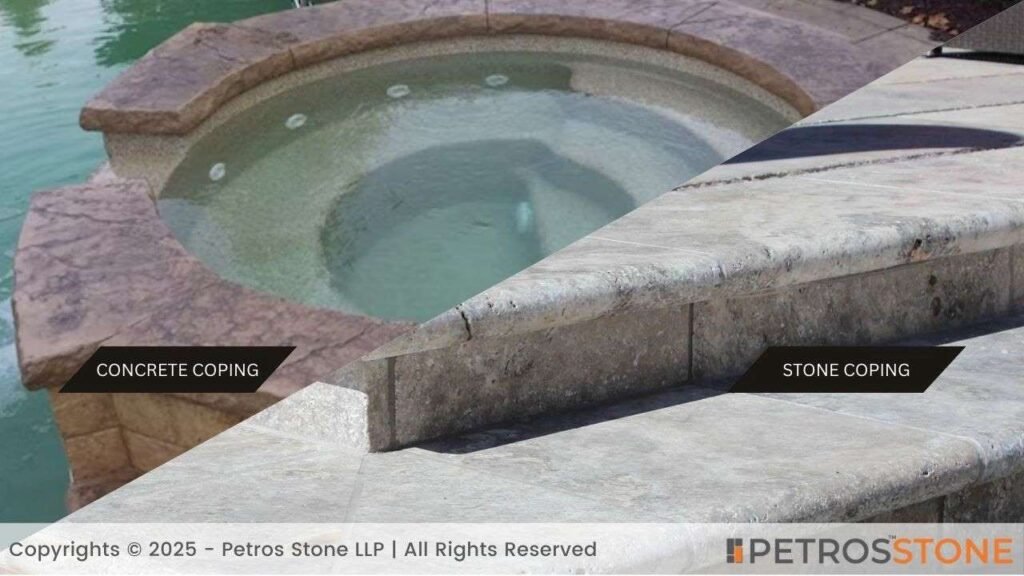
These materials have a direct impact on how they look, feel and perform.
Concrete Coping
Concrete Coping is an essential component of every business or home.
- Composition: In its most modern or flexible form, concrete can be cast using many different building methods and finishes. It is made with rock, sand, cement and often steel rebar or fiber additives.
- Manufacturing: Precast concrete coping is produced in a controlled factory atmosphere.Poured-in-place concrete is created on site to create natural curves and maximum design flexibility.
- Styles and finishes: The possibilities for concrete are almost endless – it can be finished with exposed aggregate look or textured & stamped to look like stone. The most common profiles are the round bullnose for safety and the sharp cantilever for modernity.
Stone Coping
You can choose from various distinct styles and finishes for your stone coping, which is naturally beautiful and durable.
Natural Stone Varieties: They include Limestone for its classic beauty, Granite for its toughness, bright Sandstone for its color, and Travertine for its luxury.
Finishes and appearances: There are numerous ways to complete the stone’s surface. A brushed finish can be sleek and glossy, whereas a tumbled finish is weathered and rustic, while a flamed surface is rough and very slip resistant. No two projects are the same, because each piece of stone has its very own distinct colors and veins.
Cost of Concrete Vs Stone Coping

Listed here are a few facts regarding how stone and concrete compare in the areas that matter most.
Concrete Coping
Material Cost
- Regular concrete coping typically costs between $15 and $30 per linear foot.
- Probably the most affordable kind of concrete coping is Cantilevered concrete coping (poured in place), at around $6 – $10 per linear foot, although it can go up with customization.
- The price of precast concrete coping can range from $10 to $30 per linear foot.
Installation Cost
The installation is usually included in the per-foot price previously mentioned, though the total price might differ based on the pool size, complexity and labor costs at your location.
The typical price of a concrete coping setup for a regular pool is between $3,800 – $6,200.
Total Installed Cost Example
For an ordinary residential pool (60 – 120 m), you can anticipate an overall price of $1,800 – $6,000 based on style and surface.
Stone Coping
Material Cost
Based on the finish type, natural stone coping (limestone, granite, travertine) may cost you between $25 and $60 per linear foot.
Installation Cost
- The work involved in stone coping is generally included in the price per foot because of the weight and accuracy.
- With regard to a regular pool, a complete stone coping setupgenerally costs between $4,800 and $6,800 a pool.
Total Installed Cost Example
With regard to a residential pool, anticipate a total cost of $3,000 to $8,000 or much more, based on material selection as well as the size of the pool.
To know the exact cost for your preferred natural stone coping, chat with us or check out this free online pool coping cost calculator
Cost Comparison Table
| Type | Material Cost (per linear foot) | Typical Installed Cost (per pool) | Notes |
| Concrete Coping | $15–$30 | $1,800–$6,200 | Most affordable, customizable |
| Cantilevered Concrete | $6–$10 | $3,800–$5,800 | Budget option, poured in place |
| Precast Concrete | $10–$30 | $4,200–$6,200 | Consistent quality, faster install |
| Stone Coping | $25–$60 | $4,800–$6,800 | Premium look, higher labor cost |
| Granite Coping | $30–$100 | Varies | Most durable, luxury finish |
| Travertine Coping | $20–$50 | Varies | Cool underfoot, slip-resistant |
| Limestone Coping | $17–$30 | Varies | Natural look, classic appeal |
Durability & Longevity
The concrete is very long lasting and weather resistant. Concrete may crack or chip in environments that experience frequent freeze-thaw cycles.
It cannot be damaged because stone is very hard. As an example, granite is practically unbreakable and will last many generations. These are tough enough to withstand elements, time, and heavy use.
Aesthetic Appeal
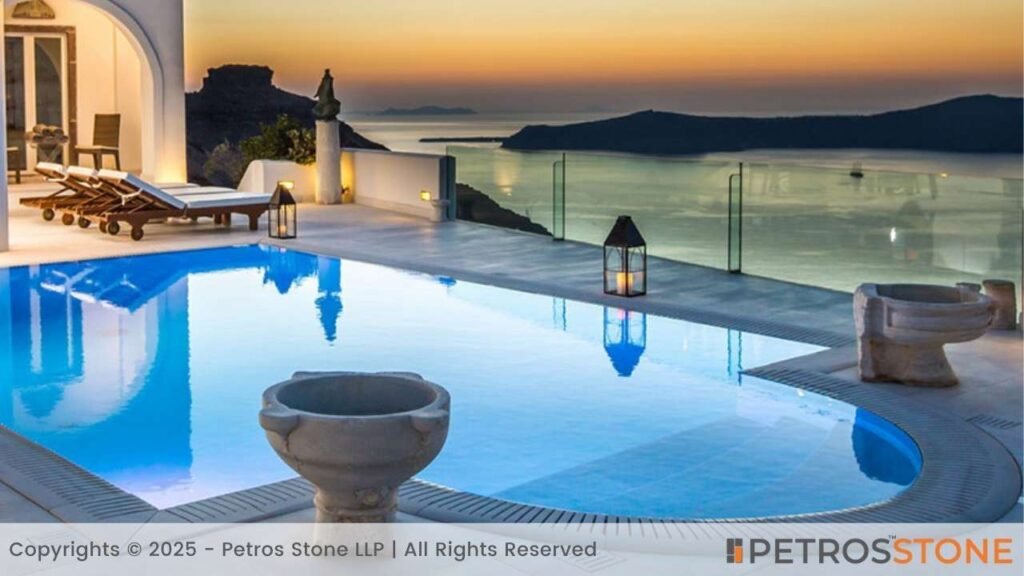
- Concrete: It is available in a number of styles, from modern and sleek to intricate and replica-stone. Uniformity as well as flexibility are its best attributes.
- Stone: The masterpiece happens to be in stone. It possesses an unparalleled natural beauty with rich colors as well as distinctive patterns, which add a feeling of permanence and luxury. It provides you with a timeless look that’s high-end yet simple to maintain.
Installation Process
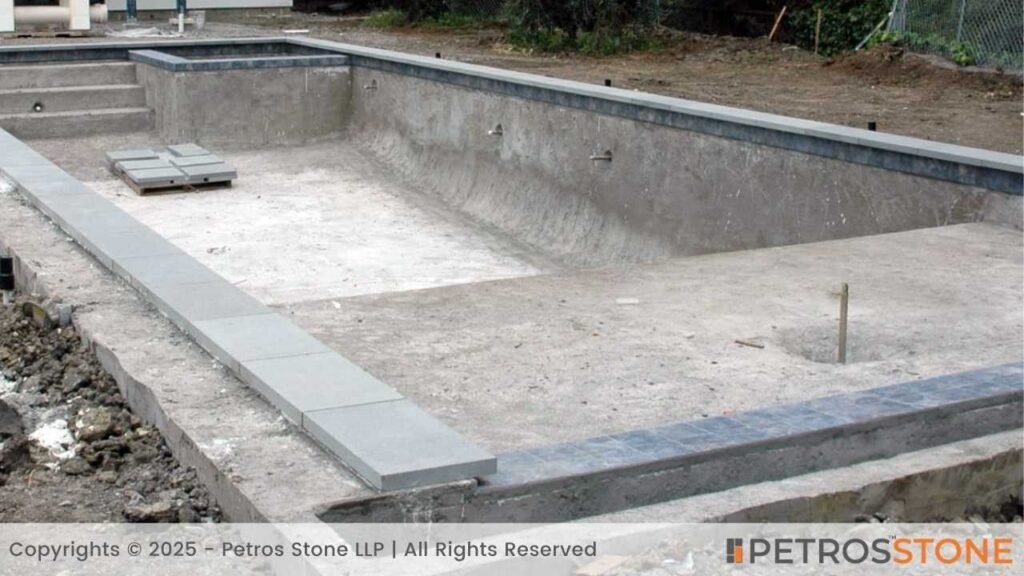
- Concrete: Concrete has a tendency to be quicker and less difficult to put in place. Precast parts are organized like puzzle pieces, while poured-in-place concrete demands competent formwork, but for complicated shapes it’s less difficult to do.
- Stone: The process is time-consuming and complicated, requiring experienced professionals to handle the heavy items effectively. Masons require specific tools to cut, fit, and finish heavy items precisely. There is a significantly higher level of craftsmanship involved.
Maintenance Requirements
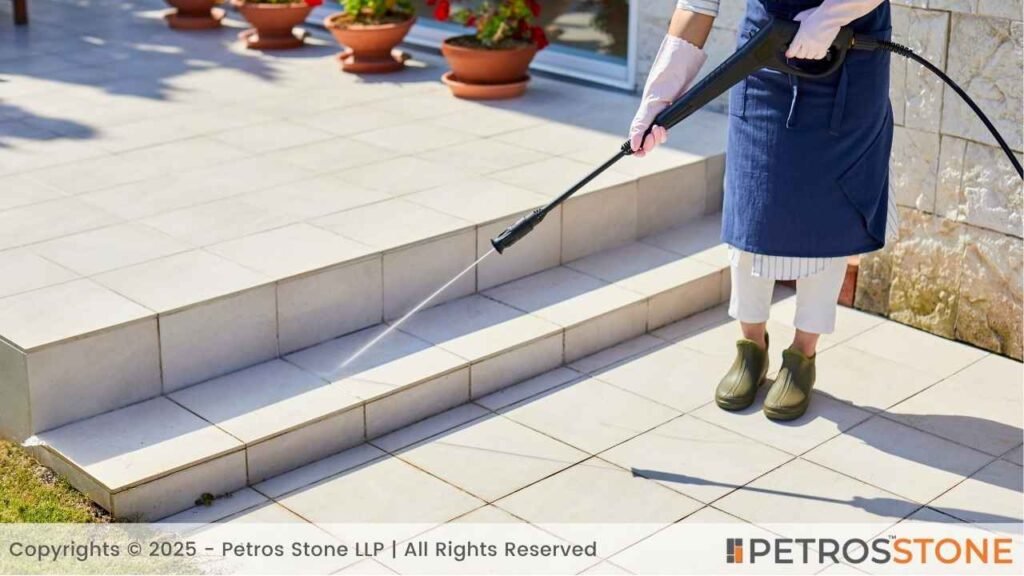
- Concrete: Due to water absorption and staining, the stone must be sealed every couple of years. Over time, chips and cracks are going to need to be filled in.
- Stone: Typically requires significantly less maintenance. Stone is naturally better able to withstand weathering and damage than some other materials, but sealing is suggested to safeguard it from stains and protect its color. Repairs aren’t that typical.
Environmental Impact
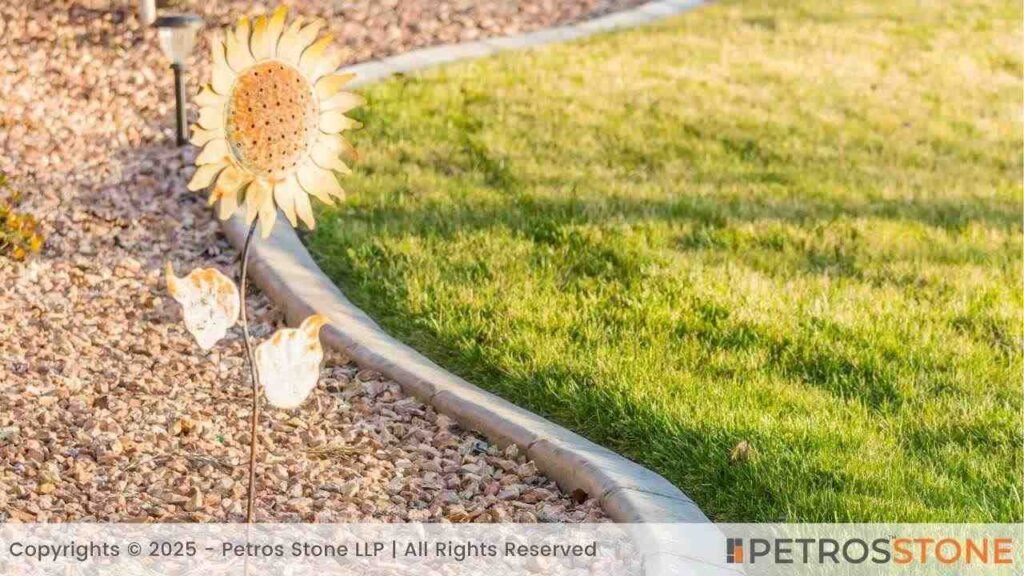
- Concrete: Cement production has a significant carbon footprint. However, several manufacturers utilize recycled materials and precast techniques to reduce on-site waste.
- Stone: It is a substance that is natural and long-lasting. Quarrying and transport are its primary environmental effects. You can lower your environmental footprint by using locally produced stone.
Use Cases & Applications
When should you pick one over the other?
Use Concrete Coping for Your Project if
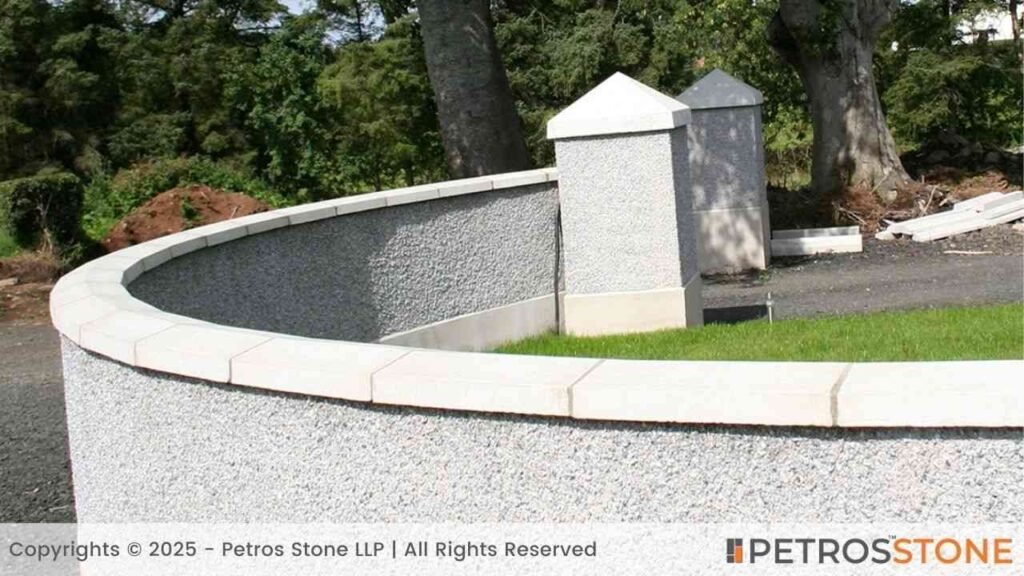
- Modern Designs: It’s ideal for modern projects since it creates clean lines as well as custom shapes.
- Budget-Sensitive Projects: It provides a long-lasting, appealing finish without the premium price of natural stone.
- Saltwater Pools: Precast concrete can be an extremely effective anti-corrosion solution for saltwater Pools, particularly since it’s chemical resistant.
- Unique Shapes: Concrete is the most adaptable material for creating poured-in-place shapes, especially if your pool or wall features complicated curves.
Use Stone Pool Coping If
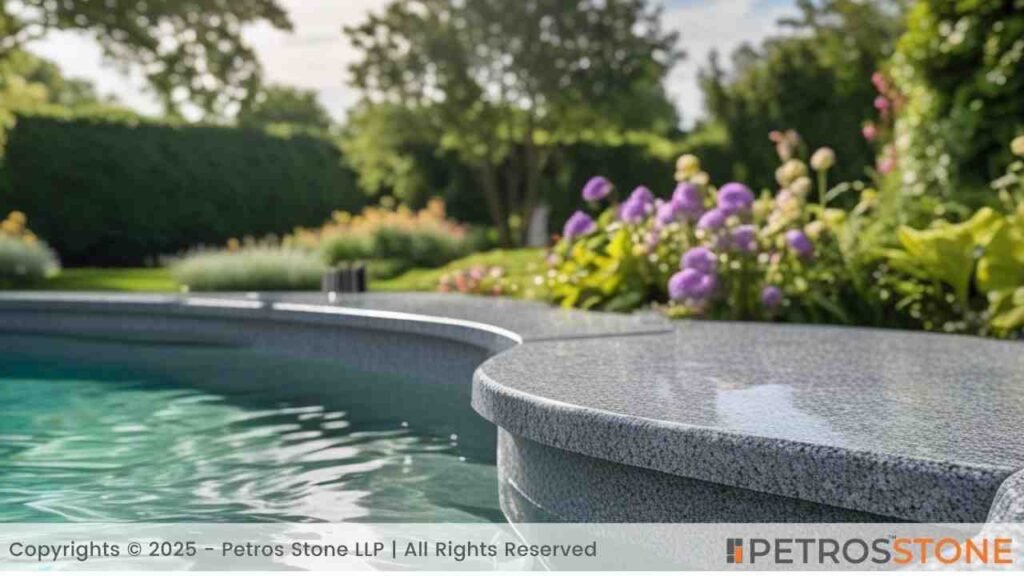
- Luxury is the goal: achieving a high-quality and elegant finish can add value to your house.
- You Have a Traditional or Historic Home: Regardless of whether You Reside in a regular Home or in a Historic Home, Stone compliments Traditional architecture very well.
- Longevity is Your Top Priority: You’re building for the long run and need a material that will last formany years.
- You appreciate natural beauty: You seek the distinctive hues, textures, and distinct character that only genuine stone can offer.
How to Choose the Right Coping for Your Project
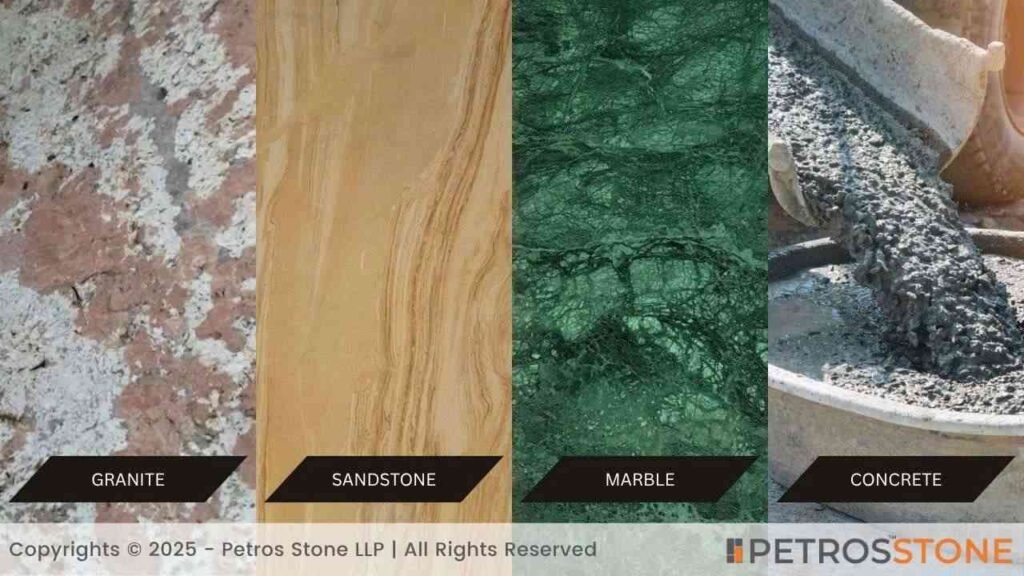
Feeling trapped? There are four questions you ought to ask yourself:
What is my budget? Frequently, this is the decisive factor. In case you’re on a strict budget, concrete is the right option. In case you’re on a strict budget, concrete is the right option, while stone is a more sensible choice. What look would I like to achieve? Concrete will be the special choice if you prefer a consistent color or appearance.
What look am I trying to achieve? Concrete is the ideal material if you desire a consistent color and appearance. Concrete is the ideal material if you desire a consistent color and appearance, while stone provides timeless and organic beauty.
Exactly what is the style of my project? Do you have a modern or traditional home? Let the architecture guide you with your selection.
Could you please clarify a few of my long-term priorities? Would you want a material that requires much less upkeep (stone), or would you rather spend much more upfront on a longer-lasting material (concrete)?
Comparison Table: Concrete vs. Stone Coping
| Feature | Concrete Coping | Stone Coping |
| Material | Pre-cast or poured concrete | Natural stones (limestone, granite, travertine) |
| Cost | Lower | Higher |
| Durability | High, but can crack or chip | Extremely high, lasts for decades |
| Aesthetic | Highly customizable, can mimic stone | Unique, natural, luxurious |
| Installation | Easier, faster, more flexible | Requires skilled labor, heavy, time-consuming |
| Maintenance | Moderate (sealing, potential repairs) | Low (sealing recommended) |
| Heat Resistance | Can get hot; lighter colors are better | Some stones (e.g., travertine) stay cool |
| Best For | Modern, custom, budget-sensitive, saltwater pools | Luxury, traditional, historic, high-value projects |
Conclusion
The choice between concrete and stone coping is a choice between versatile practicality and timeless beauty.
Concrete is the smart, adaptable solution for modern projects, custom designs and anyone working within a budget. Because it can be shaped and colored to fit any vision it is a designer’s workhorse.
By contrast, stone is an investment in natural artistry and permanence. It is the right selection for projects where luxury, authenticity and long term value are the key drivers.
When you weigh your budget, design goals as well as long term expectations you can select the right coping to protect your investment and finish out your vision for many years to come.
Ready to elevate your pool or wall project with timeless beauty and unmatched durability? Transform your space—experience the Petros difference now!
Frequently Asked Questions
Q1: Which is more durable: concrete coping or stone coping?
The tenacity of stone coping is considerably improved with time. Good-quality concrete has a tendency to crack much more easily compared to strong granite, but as time passes, it is going to become much more prone to cracking.
Q2: Is concrete coping cheaper than stone coping?
Yes, in many instances. Concrete is less costly as compared to brick-and-mortar, and additionally, it saves on material and labor.
Q3: Can concrete coping mimic the look of stone?
Absolutely. Concrete could replicate the appearance of natural stone by means of stamping, texture and integral coloring, while remaining economical.
Q4: Which coping requires less maintenance?
There isn’t a great deal of upkeep needed when utilizing natural stone. Both require sealing, but concrete is likely to crack and chip much more readily compared to other kinds of construction work.
Q5: What is the best way to cope with pools?
It will depend upon your priorities. Concrete is a good material for contemporary customization and affordability. Stone is definitely the most effective material for long-term durability, organic beauty and luxury. Precast concrete is usually suggested for saltwater pools.
Feel free to get in touch for a free consultation, quote, and get a detailed understanding from our experts here at Petros®. Visit https://petrosstone.com/ or call +91-8446360361 and WhatsApp

Hi, I’m Dhananjay,
With a background in architecture and years of industry experience, I share insights on materials that shape great design. At Petros® Stone, I craft content that highlights the beauty and utility of natural stone, helping architects, builders, and homeowners make informed choices while strengthening the brand’s voice and online presence.
Brown Granite
White Galaxy Granite
Blue Bahia Granite
Silver Cloud Granite
Black Pearl Granite
Dallas White Granite


